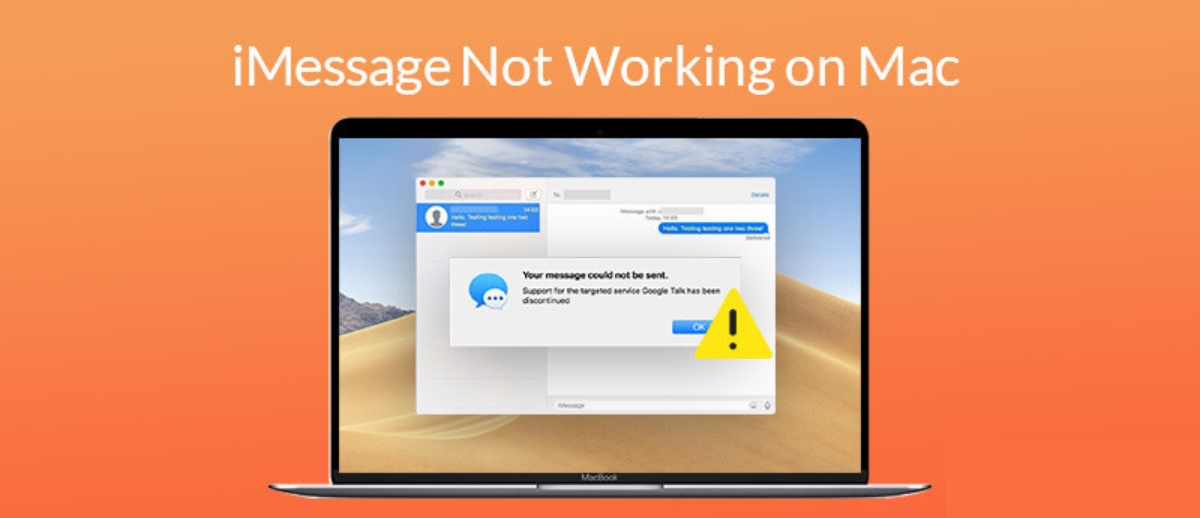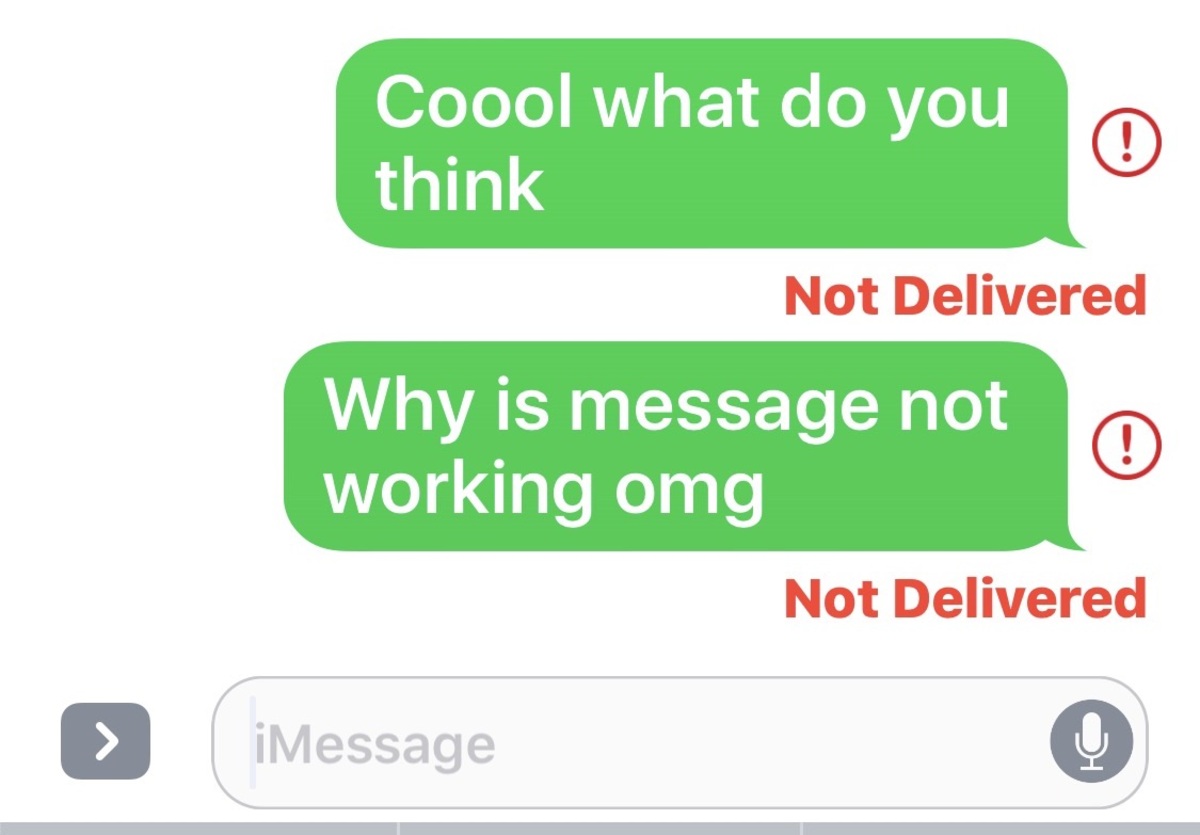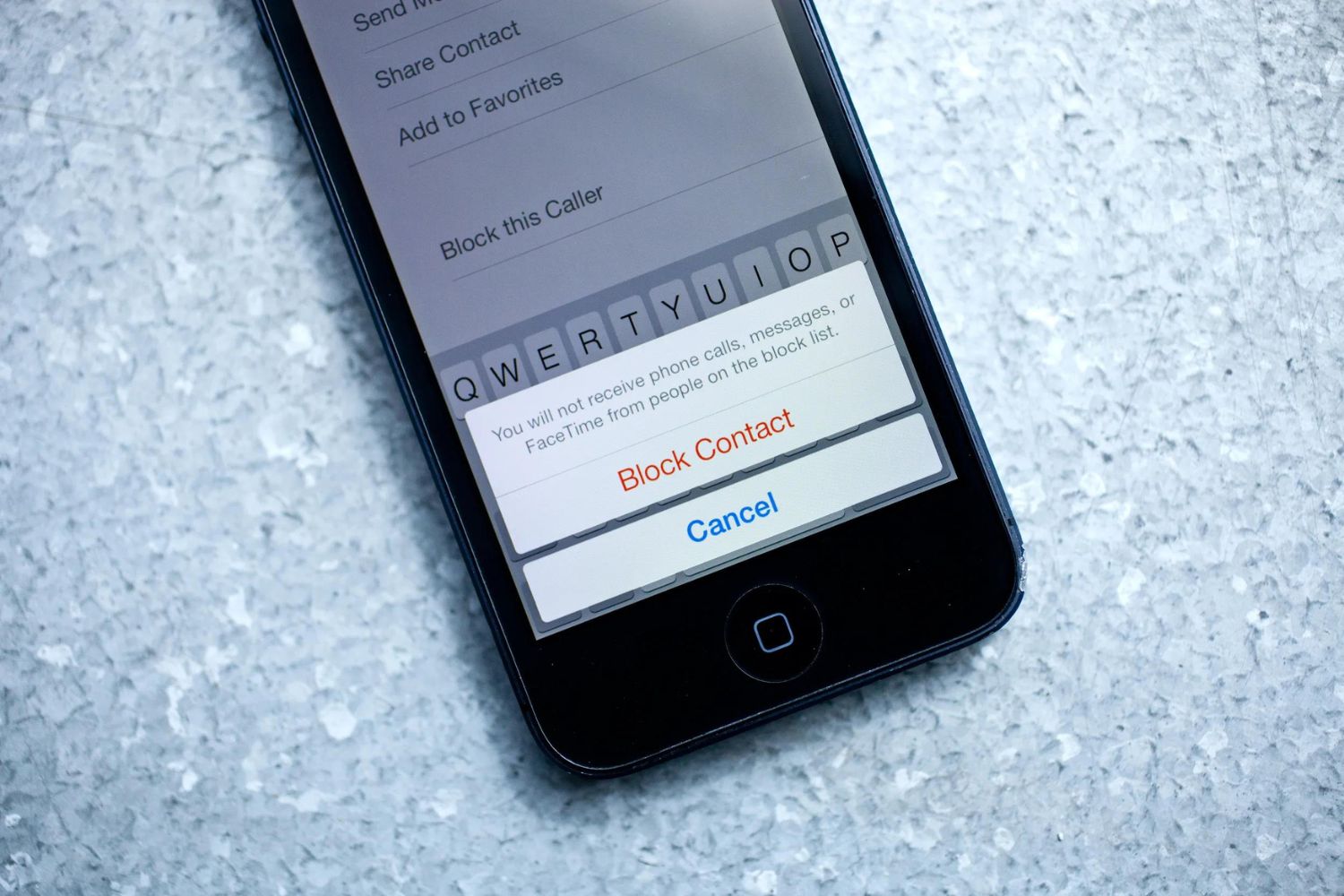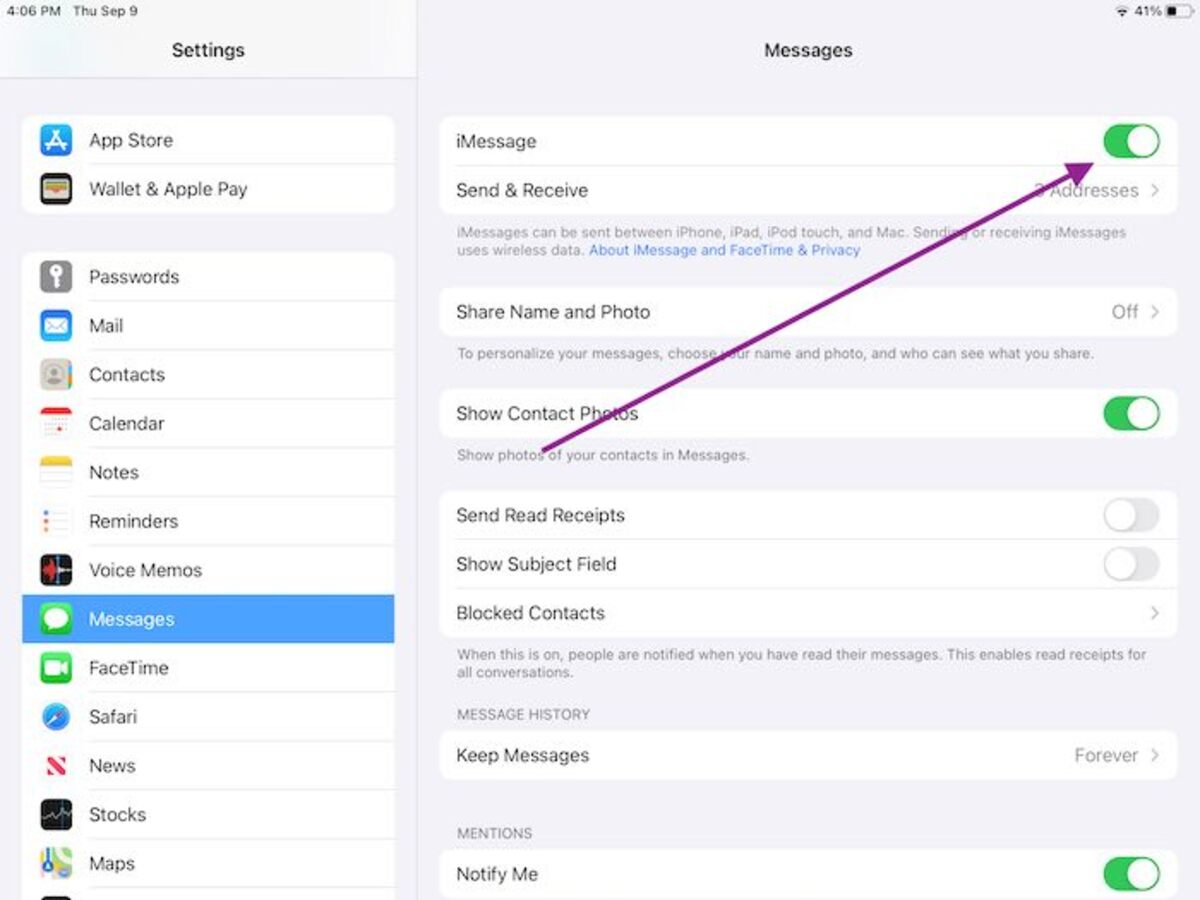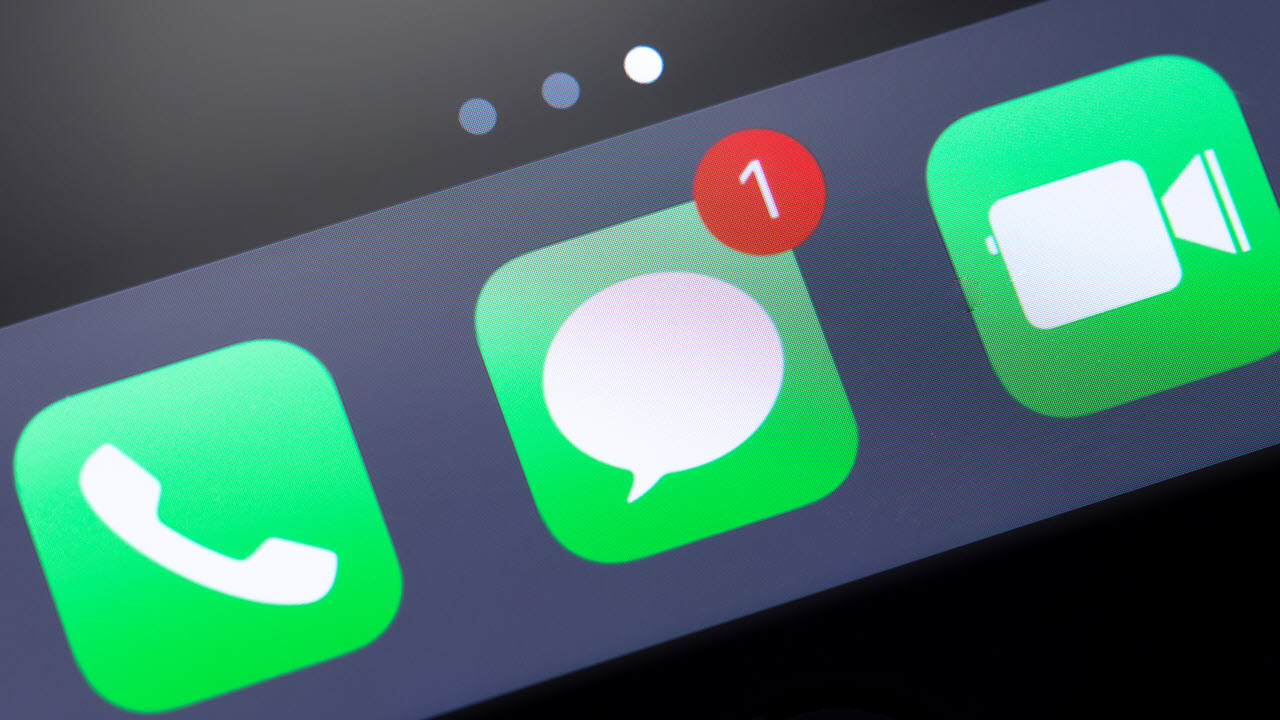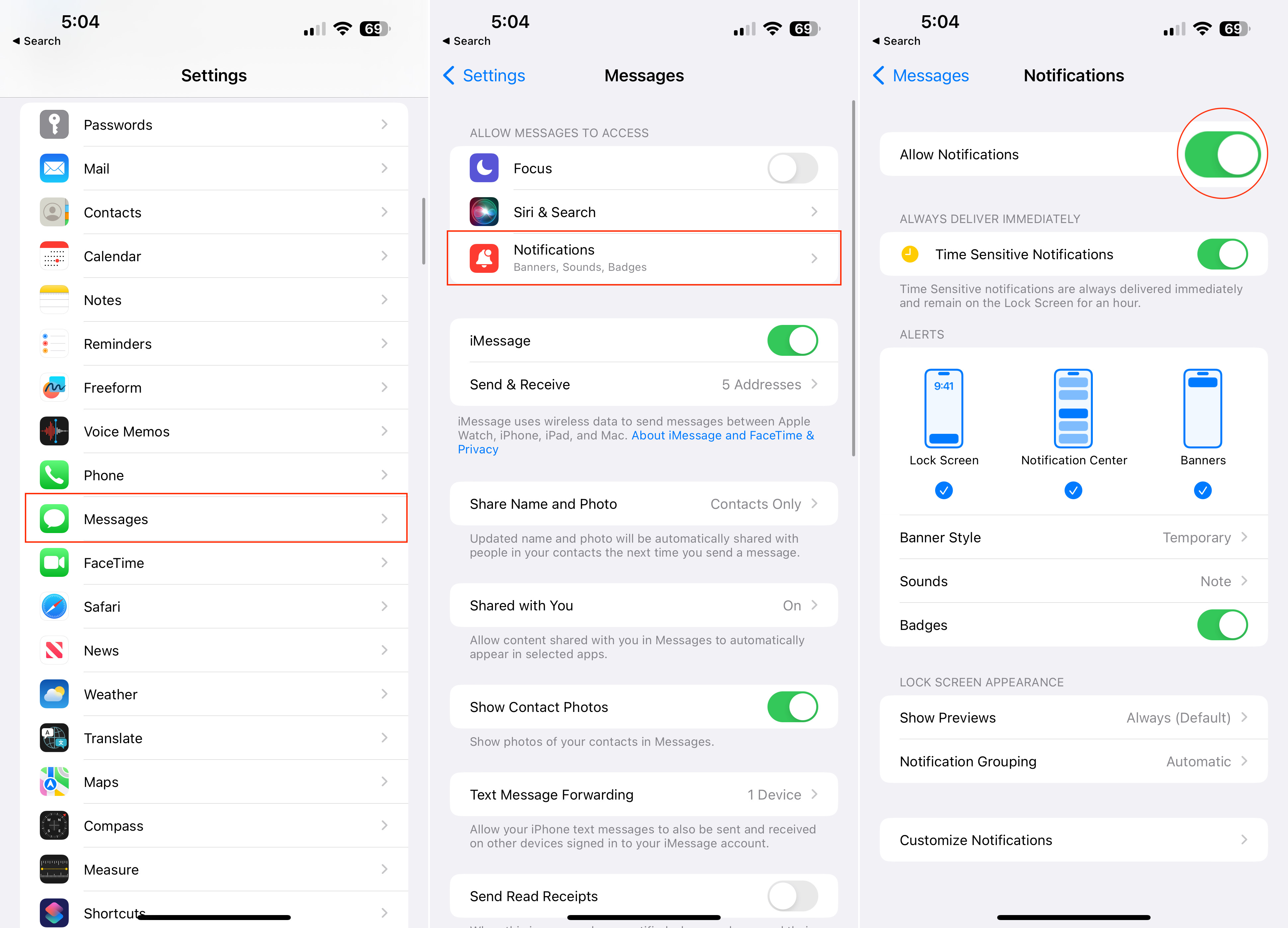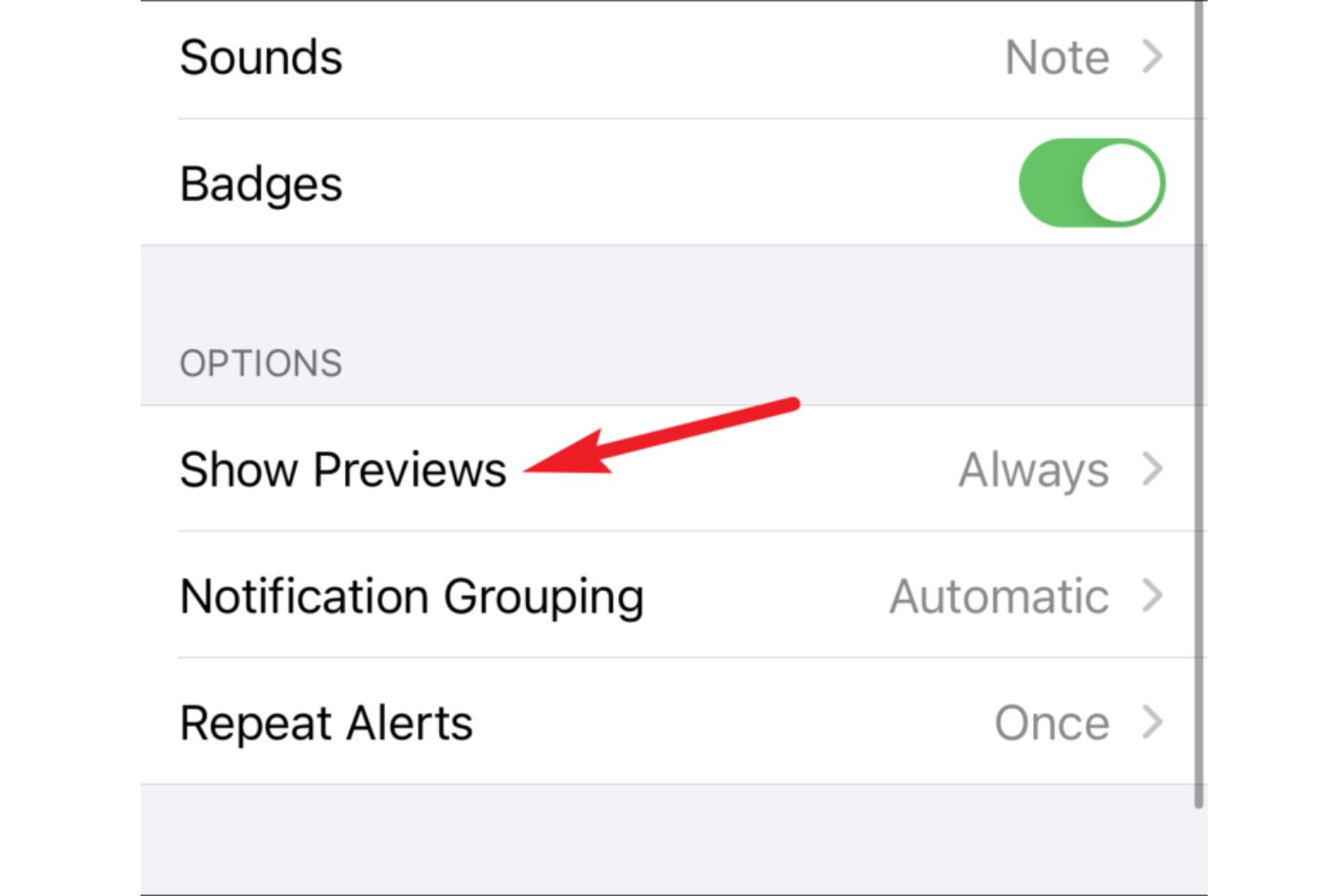Introduction
iMessage is a popular messaging service provided by Apple, allowing users to send text messages, images, videos, and more across their Apple devices. It seamlessly syncs conversations between iPhone, iPad, and Mac, making it convenient for users to stay connected regardless of the device they are using. However, there are instances when iMessage may not work as expected on a Mac, causing frustration and communication disruptions.
When iMessage is not working on your Mac, you may encounter issues such as messages not being sent or received, unable to sign in, or the app freezing or crashing. These problems can arise due to various factors, including software glitches, connectivity issues, or incorrect settings. Fortunately, there are several troubleshooting steps you can take to resolve these issues and get iMessage up and running smoothly on your Mac.
In this article, we will explore some common reasons why iMessage may not be working on your Mac and provide practical solutions to address them. Whether you’re experiencing occasional hiccups or complete functionality loss, these troubleshooting steps can often help you get iMessage back on track.
Reasons why iMessage is not working on Mac
There can be several reasons why iMessage may not be functioning properly on your Mac. Understanding these reasons can help you diagnose the issue and take appropriate action to fix it. Here are some common culprits:
- Sign out and sign back in to iMessage: Sometimes, a simple sign-out and sign-in can resolve the problem. Open the Messages app on your Mac, go to the Messages menu, select Preferences, and click on the Accounts tab. From there, sign out of your Apple ID and then sign in again.
- Restart your Mac: Restarting your Mac can often fix minor software glitches affecting iMessage. Simply go to the Apple menu, click on Restart, and allow your Mac to reboot. Once it’s back on, check if iMessage starts working properly.
- Update macOS: Outdated software can cause compatibility issues with iMessage. Make sure your Mac has the latest version of macOS installed. Go to the Apple menu, select System Preferences, click on Software Update, and install any available updates.
- Check your internet connection: A stable internet connection is crucial for iMessage to work correctly. Ensure that you have a reliable and active internet connection on your Mac. You can try connecting to a different Wi-Fi network or use a wired connection to rule out any network-related issues.
- Verify Apple ID and iCloud settings: Confirm that your Apple ID and iCloud settings are correctly set up on your Mac. Go to the Apple menu, select System Preferences, click on Apple ID, and ensure that iMessage is checked in the sidebar. Additionally, verify that your iCloud account is properly logged in and syncing.
- Delete preferences for iMessage: Corrupted preference files can cause issues with iMessage. Close the Messages app, navigate to the ~/Library/Preferences/ folder, locate the com.apple.iChat.plist and com.apple.imagent.plist files, and move them to the Trash. Then reopen Messages and check if the problem is resolved.
- Reset NVRAM: Resetting the NVRAM (non-volatile random-access memory) can help resolve various hardware-related issues. Restart your Mac, and as soon as it restarts, hold down the Option + Command + P + R keys simultaneously until you hear the startup sound for the second time. This will reset the NVRAM, and you can check if iMessage starts working properly afterwards.
- Check for software conflicts: Conflicting software or third-party apps can interfere with iMessage. Disable any recently installed apps or software extensions and check if the problem persists. You can also try running your Mac in Safe Mode to pinpoint any troublesome applications.
- Contact Apple Support: If none of the above steps resolve the issue, it’s advisable to reach out to Apple Support for further assistance. They have specialized knowledge and tools to help diagnose and resolve complex iMessage problems.
By understanding and addressing these common reasons, you can troubleshoot and fix iMessage issues on your Mac, ensuring seamless communication across your Apple devices.
Sign out and sign back in to iMessage
A simple yet effective troubleshooting step to fix iMessage issues on your Mac is to sign out of your Apple ID and sign back in. This process can refresh the connection and resolve any temporary glitches. Here’s how you can do it:
- Open the Messages app on your Mac and click on ‘Messages’ in the top menu bar.
- Select ‘Preferences’ from the drop-down menu.
- In the ‘Accounts’ tab, you will see your Apple ID listed. Click on it.
- A pop-up window will appear with your account details. Click on ‘Sign Out’ and confirm your decision.
- Once you are signed out of your Apple ID, click on the ‘Sign In’ button.
- A new window will appear, prompting you to enter your Apple ID and password.
- Enter your credentials and click on ‘Sign In’ to sign back in.
After signing back in, give iMessage a few moments to reconnect to your Apple ID and sync your conversations. Once the process is complete, verify if iMessage is working as expected on your Mac.
If signing out and signing back in didn’t resolve the issue, you can try some other troubleshooting steps mentioned in this article.
Remember, signing out and signing back in might temporarily disrupt your iMessage conversations, as messages may not sync during this process. However, once the sign-in process is completed, your conversations should resume normally.
Restart your Mac
One of the easiest and most common troubleshooting steps for resolving various software-related issues, including problems with iMessage, is to simply restart your Mac. Restarting your Mac can help clear any temporary glitches or conflicts that may be affecting iMessage’s functionality. Here’s how you can do it:
- Click on the Apple menu in the top-left corner of your screen.
- From the drop-down menu, select ‘Restart’.
- A confirmation window will appear, asking if you’re sure you want to restart your Mac. Choose ‘Restart’ to proceed.
Your Mac will then go through the reboot process, shutting down all running applications and starting fresh. Once it’s back on, open the Messages app and check if iMessage is working properly.
Restarting your Mac can often resolve minor software glitches that may be hindering iMessage’s functionality. It refreshes the system and clears any cache or memory issues that might have built up over time. Additionally, restarting can also help synchronize your Mac with any recent software updates that may have been installed.
If restarting your Mac didn’t fix the iMessage issue, there are other troubleshooting steps you can try, which will be covered in subsequent sections.
Remember, a restart is a simple yet powerful solution that can resolve many software-related problems on your Mac, so don’t underestimate its effectiveness!
Update macOS
Updating your macOS to the latest version can often resolve compatibility issues and software bugs that may be causing iMessage to malfunction. Apple regularly releases updates that include improvements and bug fixes, so it’s essential to keep your Mac up to date. Here’s how you can update your macOS:
- Click on the Apple menu in the top-left corner of your screen.
- From the drop-down menu, select ‘System Preferences’.
- In the System Preferences window, click on ‘Software Update’.
- Your Mac will now check for any available updates. If updates are found, click on the ‘Update Now’ button.
- Follow the on-screen prompts to download and install the update.
It’s important to note that updating your macOS may require your Mac to restart, so make sure to save any unsaved work before initiating the update.
Updating your macOS not only addresses potential iMessage issues but also enhances overall system performance, security, and compatibility with other applications. By keeping your Mac up to date, you ensure that you have the latest features and bug fixes that can contribute to a better user experience.
If updating your macOS didn’t resolve the iMessage problem, there are additional troubleshooting steps you can take, which will be discussed in the following sections.
Remember, keeping your macOS updated is crucial for the smooth functioning of iMessage and your Mac as a whole. Regularly check for updates and install them promptly to stay up to date with the latest improvements and fixes.
Check your internet connection
A stable and reliable internet connection is essential for iMessage to work properly on your Mac. If your internet connection is weak or experiencing connectivity issues, it can cause problems with sending or receiving messages through iMessage. Here are some troubleshooting steps to check and improve your internet connection:
- Ensure that your Mac is connected to a stable Wi-Fi network. You can check the Wi-Fi icon on the menu bar to verify your connection status. If there’s a question mark or an exclamation mark on the Wi-Fi icon, try reconnecting to the network or connecting to a different Wi-Fi network.
- If you’re using a wired Ethernet connection, make sure that the Ethernet cable is securely plugged into your Mac and the router or modem.
- If possible, try restarting your router or modem. Unplug the power source, wait for a few seconds, and then plug it back in. Allow the router or modem to reboot and then check if your internet connection is stable.
- Check if other devices on your network are experiencing internet connectivity issues. If other devices are also having problems, it’s likely an issue with your internet service provider. Contact your ISP for support.
- Try temporarily disabling any VPN or proxy services that you may have enabled on your Mac. Sometimes, these services can interfere with the proper functioning of iMessage. Disable them and check if iMessage starts working correctly.
- If you’re still experiencing internet connection issues, contact your internet service provider for assistance. They can help troubleshoot and resolve any underlying network problems that may be affecting your connection.
By ensuring a stable and reliable internet connection, you can eliminate one potential cause of iMessage issues. If the problem persists even after checking your internet connection, there are additional troubleshooting steps you can take, which will be covered in the subsequent sections.
Remember, a strong internet connection is crucial for the seamless functioning of iMessage on your Mac. Taking the time to troubleshoot and resolve any connectivity issues can greatly improve your iMessage experience.
Verify Apple ID and iCloud settings
Ensuring that your Apple ID and iCloud settings are correctly configured on your Mac is crucial for the proper functioning of iMessage. If there are any discrepancies or incorrect settings, it can lead to issues with signing in or syncing messages. Here’s how you can verify your Apple ID and iCloud settings:
- Click on the Apple menu in the top-left corner of your screen and select ‘System Preferences’.
- In the System Preferences window, click on ‘Apple ID’.
- Make sure that your Apple ID information is displayed correctly. If not, click on ‘Overview’ in the sidebar, and you will have the option to sign in with the correct Apple ID.
- In the ‘Apps on this Mac using iCloud’ section, verify that ‘Messages’ is checked. This ensures that your iMessage conversations are synced with iCloud.
- Click on the ‘iCloud’ tab in the sidebar to access your iCloud settings.
- Make sure that the ‘Messages’ option is checked in the list of apps using iCloud.
- If you recently changed your Apple ID password, ensure that your Mac is updated with the new password. If needed, sign out of your Apple ID and sign back in with the correct credentials.
Verifying your Apple ID and iCloud settings can help ensure that iMessage is properly linked to your account and syncing your messages across devices. If any settings were incorrect or if there were issues with signing in, correcting them should resolve any issues you were experiencing with iMessage.
If verifying your Apple ID and iCloud settings did not fix the problem, there are additional troubleshooting steps you can try, which will be discussed in the following sections.
Remember, accurate and up-to-date Apple ID and iCloud settings are essential for the smooth functioning of iMessage on your Mac. Take the time to verify and adjust these settings if necessary to ensure a seamless messaging experience.
Delete preferences for iMessage
Deleting the preferences for iMessage can help resolve any corrupted preference files that may be causing issues with the functionality of the messaging service on your Mac. Here’s how you can delete the preferences for iMessage:
- Close the Messages app if it’s open.
- Open a Finder window on your Mac.
- Click on the “Go” tab in the menu bar at the top.
- Hold down the “Option” key on your keyboard to reveal the Library folder.
- Click on the “Library” folder that appears in the drop-down list while still holding down the “Option” key.
- In the Library folder, navigate to the “Preferences” folder.
- Search for the following files:
com.apple.iChat.plistandcom.apple.imagent.plist. - Move these files to the Trash.
- Restart your Mac.
- After the restart, open the Messages app and check if iMessage is functioning properly.
Deleting the preference files for iMessage will reset the settings and configurations related to the messaging service. This can often fix issues caused by corrupted or conflicting preferences that may be preventing iMessage from working correctly.
If deleting the preferences for iMessage did not resolve the problem, there are additional troubleshooting steps you can try, which will be discussed in the subsequent sections.
Remember, when deleting preference files, it’s essential to be cautious and only delete the specific files mentioned in this section. Deleting other files may cause unintended issues on your Mac.
Reset NVRAM
Resetting the NVRAM (non-volatile random-access memory) on your Mac can help resolve various hardware-related issues, including those that may be affecting iMessage. NVRAM stores certain settings that your Mac uses on startup, and resetting it can clear out any inconsistencies that may be causing problems. Here’s how you can reset the NVRAM:
- Shut down your Mac completely.
- Press the power button to turn on your Mac.
- Immediately hold down the Option + Command + P + R keys on your keyboard.
- Keep holding the keys until you hear the startup sound for the second time or see the Apple logo appear and disappear for the second time.
- Release the keys.
- Your Mac will now start up normally.
By resetting the NVRAM, you are essentially clearing out certain hardware-related settings that could potentially be causing issues with iMessage. After resetting, check if iMessage is working properly on your Mac.
If resetting the NVRAM did not solve the problem, there are additional troubleshooting steps you can try, which will be discussed in the subsequent sections.
Remember, resetting the NVRAM is a hardware-level troubleshooting step and should only be done when necessary. It can help resolve certain issues, but it won’t fix all iMessage-related problems.
Check for software conflicts
Software conflicts with third-party apps or conflicting system settings can sometimes interfere with the proper functioning of iMessage on your Mac. Identifying and resolving these conflicts can help restore iMessage’s functionality. Here’s how you can check for software conflicts:
- Quit all running applications on your Mac.
- Open the Messages app and check if iMessage is working properly. If it does, then one of the applications you quit may be causing the conflict. You will need to identify the specific app causing the issue.
- Reopen the other applications one by one, testing iMessage after launching each app, to determine which one is causing the conflict.
- If you identify the app causing the issue, try updating it to the latest version. Check the app developer’s website for any known compatibility issues with iMessage.
In addition to checking for conflicts with third-party apps, it’s also advisable to check for any conflicting system settings. Here’s how you can do it:
- Click on the Apple menu in the top-left corner of your screen and select ‘System Preferences’.
- Go through each preference pane and review the settings, paying particular attention to any that may relate to messaging or network connectivity.
- If you notice any conflicting settings or are unsure about a specific preference, consult the macOS documentation or contact Apple Support for guidance.
By identifying and resolving software conflicts, whether they are caused by third-party apps or conflicting system settings, you can often restore iMessage’s functionality on your Mac.
If checking for software conflicts did not resolve the iMessage problem, there are additional troubleshooting steps you can take, which will be discussed in the subsequent sections.
Remember, identifying and resolving software conflicts can be a process of trial and error. Take the time to systematically identify the conflicting app or settings, and once identified, take the necessary steps to resolve the conflict.
Contact Apple Support
If you have exhausted all possible troubleshooting steps and iMessage is still not working on your Mac, it may be time to seek assistance from Apple Support. Apple Support has specialized knowledge and resources to help diagnose and resolve complex iMessage issues. Here’s how you can contact Apple Support:
- Visit the Apple Support website (support.apple.com).
- Click on the “Contact Support” option.
- Select your Mac device and the topic related to iMessage or messaging issues.
- Choose the type of support you prefer, such as live chat, phone call, or scheduling a Genius Bar appointment at an Apple Store.
- Follow the provided instructions to connect with an Apple Support representative.
When contacting Apple Support, make sure to provide them with detailed information about the issue you’re experiencing with iMessage. This will help them understand the problem better and provide you with the most appropriate assistance.
Apple’s support team may guide you through additional troubleshooting steps or provide recommendations specific to your Mac and the version of macOS you are running. They can also escalate the issue if necessary to their specialized technicians for further investigation.
Remember, Apple Support is there to help you. If you have exhausted all other options and iMessage is still not working on your Mac, don’t hesitate to reach out to them for personalized assistance.







